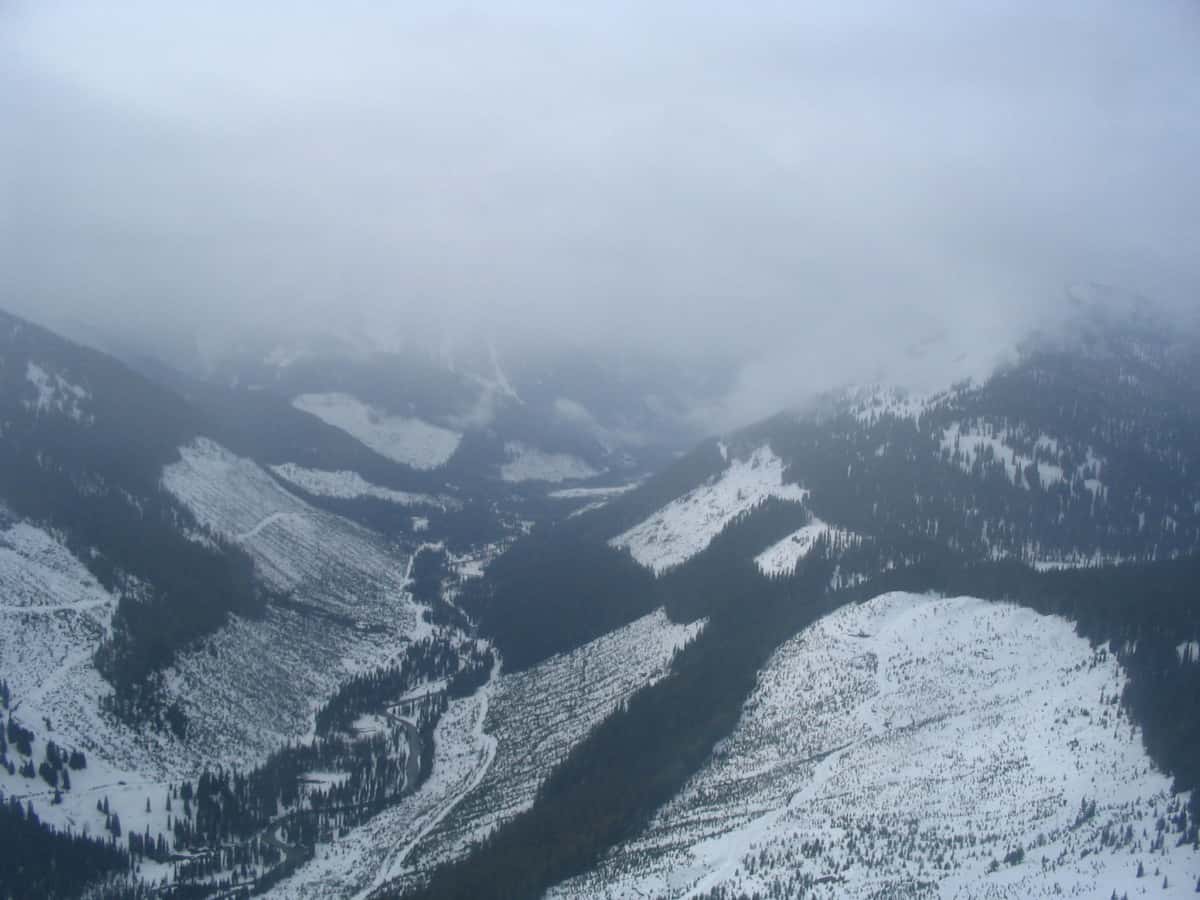
A friend of mine recently asked me a question where he has seen many videos of big airplanes just appearing out of the clouds and landing, but yet he has never seen any videos of small airplanes doing that. He asked if there was a reason for that and if there were different rules.
All pilots fly under two sets of rules – VFR (Visual Flight Rules) is where pilots have to be able to see the ground or horizon at all times and IFR (Instrument Flight Rules) where pilots fly by sole reference to their cockpit instrumentation and can fly in zero visibility like cloud, fog & night.
As you all have probably guessed now, Visual Flight Rules (VFR) flights may be the easiest and the most enjoyable way to fly an aircraft, whereas IFR requires more training and a more sophisticated aircraft.
So how do pilots know which rules apply to them?
VFR – Visual Flight Rules
VFR is when a pilot or pilots in a multi-crew aircraft are flying the aircraft by looking outside and trying to navigate following the terrain or landmarks to guide them from point A to point B.
The points that pilots look for can be mountains, roads, rivers, cities, or even buildings or prominent landmarks. Looking first at the map and then outside they are figuring out where they are first of all and then where to point the nose of the aircraft to reach their next waypoint and finally their destination.
To be able to accomplish this safely the pilot/s need to be able to have good enough weather to see these points.
To do this the FAA has set weather minimums that the pilot/s must adhere to to ensure that they have enough visibility to see the ground or horizon. Those minimums are called Visual Meteorological Conditions (VMC) and vary based on the altitude the pilot is flying at, the class of airspace they are in & the time of day:
| Altitude | Airspace | Forward Visibility | Distance From Clouds |
|---|---|---|---|
| 10,000ft MSL & Above | E | 5 Statute Miles (SM) | 1,000ft Below 1,000ft Above 1SM Horizontal |
| Below 10,000ft MSL | E D C | 3 SM | 500ft Below 1,000ft Above 2,000ft Horizontal |
| Below 10,000ft MSL | B | 3 SM | Clear of Clouds |
| 1,200ft AGL & Above | G (Night) | 3SM | 500ft Below 1,000ft Above 2,000ft Horizontal |
| 1,200ft AGL & Above | G (Day) | 1SM | 500ft Below 1,000ft Above 2,000ft Horizontal |
| Below 1,200ft AGL | G (Night) | 3SM | 500ft Below 1,000ft Above 2,000ft Horizontal |
| Below 1,200ft AGL | G (Day) | 1SM | Clear of Clouds |
MSL = Mean Sea Level
AGL = Above Ground Level
For example, to remain legal, a pilot flying:
- VFR during the day at 7,000ft in Class B Airspace only has to remain clear of clouds, they can be any distance to them so long as they don’t fly into them. They also have to ensure they can see at least 3SM ahead of the aircraft.
- VFR during the night over a city at 2,000ft in Class G airspace has to stay 500ft Below any cloud layer, 1,000ft Above any cloud layer, and at least 2,000ft Horizontally from any cloud. In addition, they also have to be able to see at least 3SM in front of the aircraft.
The type of aircraft the pilot is flying can be any aircraft, but the pilot has to regard these weather minimums or they begin to approach into the Special VFR (SVFR) and then IFR rules.
VFR is what ALL pilots first learn to fly in. It is these rules that most training and recreational flying pilots follow as it is the most fun and gives them the most flexibility in where they want to fly and when. Flying in good weather is how most pilots enjoy their time in the air and is a great way to travel.
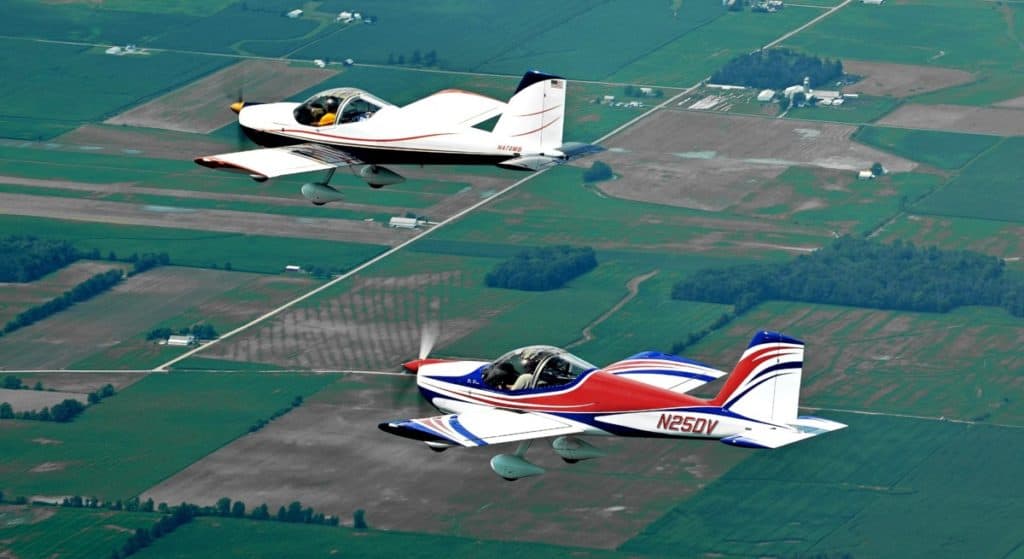
The problem with VFR is when pilots need to get home or to a location they have planned to be at and the weather starts to become worse than the VMC minimums set forth by the FAA. When VFR pilots push worsening weather and continue to fly is when they can get into trouble, lose reference to the ground, become disorientated, and end up in a terrible accident.
Most VFR pilots are not trained to fly using the instruments of their aircraft, or the procedures and IFR infrastructure. VFR pilots are used to flying with external visual references and their bodies telling them which way is upright, known as ‘Flying by the Seat of the Pants’. If vision outside the cockpit is lost inside the clouds, due to heavy rain, or fog, most VFR pilots will probably trust their bodily senses instead of the instruments.
That is a big mistake that many VFR pilots make. Bodily senses without the powerful cue of vision will soon disorientate and the pilot will believe they are upright, flying straight and level, when in actual fact they could be in a steep, turning dive where the ground soon appears.
To remain safe, VFR pilots are advised to always stay within good weather, and if the weather looks bad or starts to get bad, turn around and land, or not take the flight in the first place.
To help make these calls as to when to stay or get on the ground aviation weather has some simple rules denoting the weather in certain areas using colors on their reporting maps:
VFR – Visual Flight Rules:
Ceilings are higher than 3,000 feet AGL and the visibility is more than 5 SM
MVFR – Marginal Visual Flight Rules:
Ceilings are between 1,000 and 3,000 feet AGL or the visibility is between 3 and 5 SM
IFR – Instrument Flight Rules:
The lowest ceiling is less than 1,000 feet AGL or the visibility is less than 3 SM
LIFR – Low Instrument Flight Rules:
The lowest ceiling is less than 500 feet AGL or the visibility is less than 1 SM
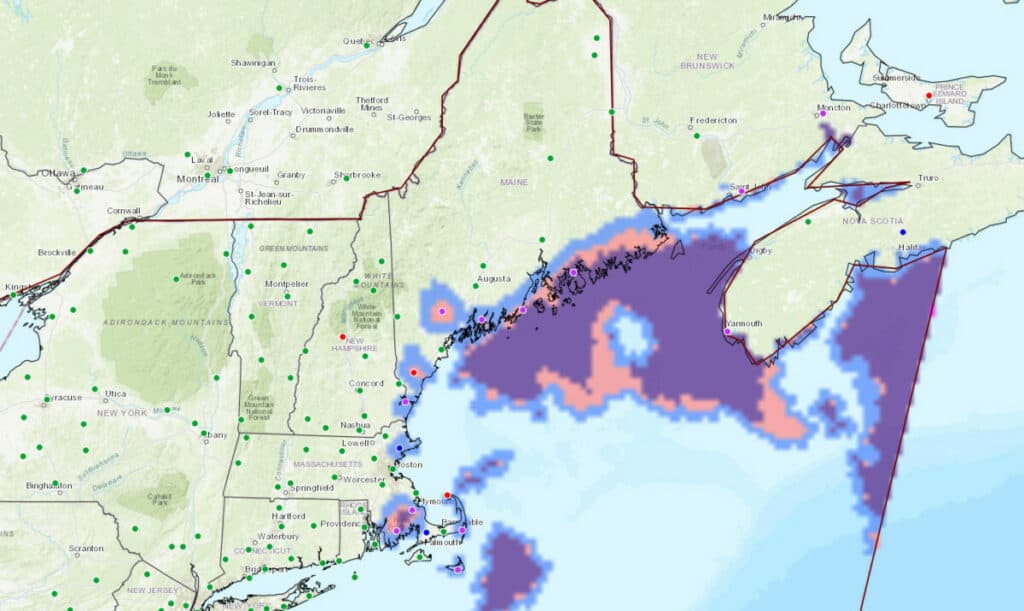
By using these colors a pilot can quickly see before they leave, and sometimes while in the air if flying using an iPad or GPS with integrated satellite weather, the current conditions ahead or around them. If a VFR pilot is approaching an area of MVFR it would be wise for them to land before they arrive at the weather, or turn around and return to their last point of departure and pick another time to do that flight.
If a pilot finds themselves in worsening weather and needs to land they can talk with air traffic control to get clearance for Special VFR.

Join My Newsletter & Get Great Tips, Information and Experiences To Help You Become a Superb Pilot!
SVFR – Special VFR
Special VFR (SVFR) is used for VFR pilots to arrive or depart an airport that is surrounded by controlled airspace when the weather has degraded below the VFR weather minimums.
For the pilot wishing to land, they can request permission from air traffic control (ATC) to enter their airspace under Special VFR for the purpose of landing. Providing there is no conflicting traffic, especially IFR traffic within the airspace, the air traffic controller will grant the pilot permission to enter under SVFR.
Another time SVFR is useful is if the pilot is trying to leave the controlled airport when the weather is below VFR minimums at the airport, but the surrounding weather is above VFR minimums – For example, if the airport is in a valley and surrounded by light fog, but over the top of the valley its clear blue sky for hundreds of miles.
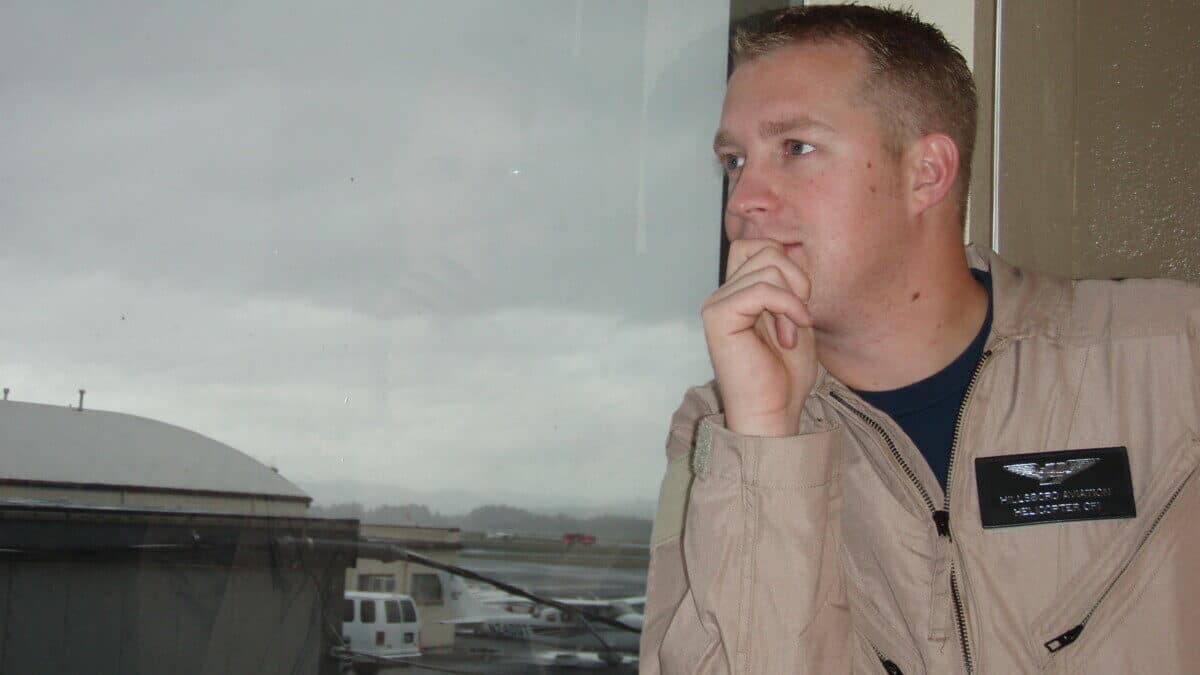
Again, the pilot must request the SVFR departure and have it approved by ATC. Until that pilot is clear and there is no IFR traffic operating within the airspace ATC will not issue SVFR clearance to another pilot.
Learn More…
Try These Articles:
* How Do Pilots See At Night? Everything You Want To Know!
* How Do Pilots Understand Air Traffic Control (ATC)?
IFR – Instrument Flight Rules
IFR is by far the safest way of flying and the most efficient, especially for aircraft that run regular routes like the airline industry. One of the differences between IFR and VFR is that all aircraft can fly VFR, but not all aircraft can fly in IFR. The same goes for pilots as well.
For a pilot to fly in IFR weather (Known as IMC – Instrument Meteorological Conditions) they must have trained and passed their Instrument Rating and the aircraft must be equipped with additional equipment and instrumentation to allow the pilot to safely navigate with zero visual references outside the cockpit.
For example, for an airliner to be IFR-Certified the FAA states under 14CFR § 125.205 it needs to be equipped with:
- A vertical speed indicator;
- A free-air temperature indicator;
- A heated pitot tube for each airspeed indicator;
- A power failure warning device or vacuum indicator to show the power available for gyroscopic instruments from each power source;
- An alternate source of static pressure for the altimeter and the airspeed and vertical speed indicators;
- At least two electrical generators;
- Two independent sources of energy (with means of selecting either), of which at least one is an engine-driven pump or generator;
- An airspeed indicating system with a heated pitot tube or equivalent means for preventing malfunctioning due to icing;
- A sensitive altimeter;
- Instrument lights providing enough light to make each required instrument, switch, or similar instrument easily readable;
Whereas a small private Cessna to be IFR-certified under 14CFR § 91.205(d) it needs to be equipped with:
- Generator or alternator
- Rate of Turn Indicator
- Attitude Indicator
- Ball (inclinometer)
- Clock
- Altimeter
- Radio/Navigation Equipment (appropriate for flight)
- Directional Gyro/Heading Indicator
- In addition to its Day & Night VFR Required Equipment
Commercial airliners all over the world fly solely under IFR. Even in the most perfect weather conditions we always use IFR mostly for safety, but efficiency as well.
When flying under IFR, the pilots and their aircraft are always under radar control by Air Traffic Control (ATC) and are always following specific IFR routes. The job of ATC is to be the eyes of the pilots to ensure each aircraft avoid each other as the pilots cannot see. ATC is responsible for the separation between aircraft laterally and vertically.
The typical separation between aircraft flying IFR during cruise is 6 nautical miles laterally and 1000 feet vertically. IFR aircraft can fly everywhere no matter the weather and because of this IFR aircraft can take off with visibility as low as 300ft and cloud ceiling at 0 feet. Which by definition is dense fog.
They can also land using the airplane’s autoland systems when the visibility is 0 feet and the cloud ceiling at 0 feet as well. The pilots can do that by using the instruments and radio equipment in the aircraft and in the airport to guide the aircraft to the landing runway just by looking inside the cockpit.
When a pilot wishes to undertake an IFR flight they will plan their route using the required airport departure procedures, en route IFR charts, and then the destinations airports Instrument Approach Procedure. IFR flights take a lot more planning by the pilot as the aircraft has to be assigned a slot by ATC for it to be tracked and monitored for its entire journey.
The pilot will tell ATC their point of departure, which Victor Airways and Waypoints they wish to navigate between before descending for their destination airport.
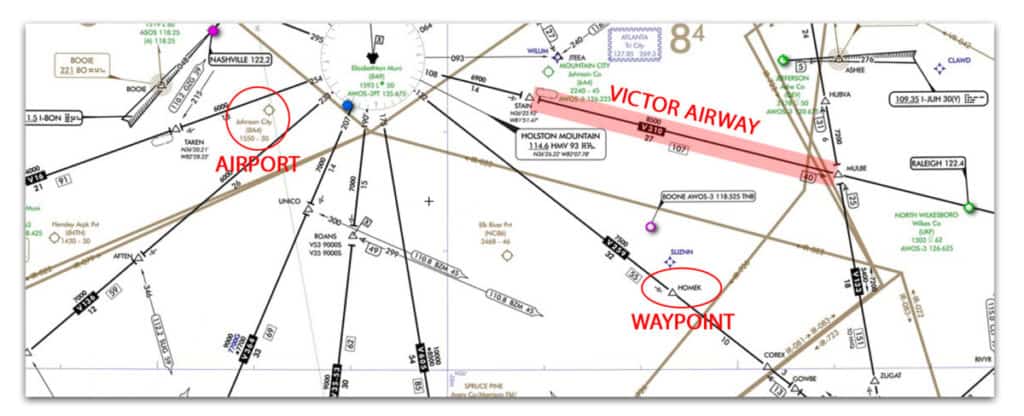
This is far less flexible compared to the VFR flights but allows pilots to fly in all weather.
IFR flight is not just limited to the airlines. Corporate and private jets, helicopters, and even small Cessnas can fly under IFR providing the pilot and the aircraft meet the requirements mentioned above. It just takes more training and further costs to be able to fly IFR compared to VFR.
Learn More…
Try These Articles:
* Flying Above Clouds: Can Helicopters Do That?
* Helicopter or Airplane: Which is Easier To Fly?

